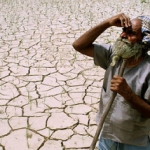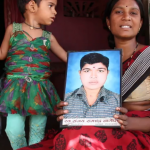 India’s small farmers are in trouble. A perfect storm of climate change, globalization, and government ineptitude is battering away at what was once the country’s most common occupation. The last two decades have seen an explosion in farmer suicides, as indebtedness, crop failure, and usury leave them hopeless and desperate.
India’s small farmers are in trouble. A perfect storm of climate change, globalization, and government ineptitude is battering away at what was once the country’s most common occupation. The last two decades have seen an explosion in farmer suicides, as indebtedness, crop failure, and usury leave them hopeless and desperate.
The crisis began in 1991, when economic ‘reforms’, exposed Indian farmers to global competition; specifically to the US and UK who receive huge government subsidies. These subsidies drive down prices, resulting in diminished profits and, in some cases, product having to be sold at a loss. Without similar subsidies of their own, the small Indian farmer remains effectively barred from the market.
Those who do remain have to turn to high-cost seeds, fertilizers, and pesticides in order to compete. However, because small farmers in India cannot qualify for bank loans, they are forced to borrow from loan sharks who charge interest rates in excess of 20%. These loan sharks frequently raise rates, so that 40% and even 50% interest is not uncommon. Along with the effects of globalization, it is this ever worsening cycle of indebtedness that has led to an alarming number of farmer suicides.
Since 1995, 270,000 farmers have committed suicide. In 2014, 5,650 farmers killed themselves, roughly 4.3% of all farmer suicides. That’s one farmer every 41 minutes. Of these, 21% were directly related to bankruptcy or indebtedness.
Of course, the effects of climate change are not making the situation any easier. Extreme weather events, drought, and heat waves have proven a deadly combination. The drought of 2002, the heat wave in May 2003, the extremely cold winters of 2002 and 2003, the flooding of 2005, and the 23 percent rainfall decline in the 2009 monsoon season—these are just some of the extreme weather events that have taken a heavy toll on crop output.
 Other than reversing globalization, the best way to help India’s small farmers is to provide them access to modern farming technologies and methods: biological pest control, mechanical cultivation, crop rotation, and use of green manures and composts. Additionally, the government needs to educate farmers about the various funding and assistance available to them, as well as implement skill-development programs. The government would also do well to develop improved rainwater-harvesting methods, diverting water from perennial rivers. Groups like Save Indian Famers are doing what they can to help widows of deceased farmers, and to help families escape from mounting debt.
Other than reversing globalization, the best way to help India’s small farmers is to provide them access to modern farming technologies and methods: biological pest control, mechanical cultivation, crop rotation, and use of green manures and composts. Additionally, the government needs to educate farmers about the various funding and assistance available to them, as well as implement skill-development programs. The government would also do well to develop improved rainwater-harvesting methods, diverting water from perennial rivers. Groups like Save Indian Famers are doing what they can to help widows of deceased farmers, and to help families escape from mounting debt.
The plight of the Indian farmer, though distant, is not so different from our own. As small farmers, we would do well to work against the same forces that are driving so many to despair so many miles away.
